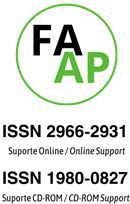Perception of public transport in Brazilian capitals in the COVID-19 pandemic
DOI:
https://doi.org/10.17271/1980082717120212829Palavras-chave:
COVID-19, Public Transport.Resumo
The COVID-19 pandemic hit the world in 2020. The most prominent measure to deal with the new coronavirus was social isolation. One of the initial recommendations was for people to avoid public transport when possible. This study seeks to analyze whether there was a significant change in the mode of displacement of the population of Brazilian capitals during the COVID-19 pandemic, what is the perception and the main challenges of public transport in this context, and which contagion measures population considers safer. The methodology involved a survey of the measures adopted to combat the spread of the new coronavirus and the application of a public transport perception questionnaire before, during, and after the pandemic. The results show a reduction in modal share of trips made on public transport modes and an increase in the percentage of trips by car; and that public transport systems can be safe and perceived as that, since operators adopt adequate security measures. This is not, however, the perception of those who commuted by public transport during the pandemic. It is important that passengers perceive the system as safe for resumption of demand in the post-pandemic scenario. The key challenge lies in the financing of public transport systems, and it is necessary to analyze a restructuring that will allow to offer a high quality and safe service to the transmission of SARS-CoV-2.












